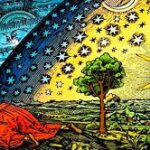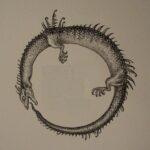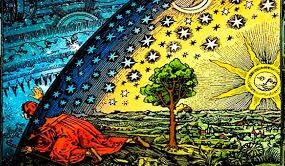
A vast scientific literature clearly and irrefutably demonstrates that transcendental meditation changes the external parameters related to the state of events in the sphere of Space-Time-Energy, i.e. the “virtual reality”.
There are also stories of some cases of healing of people who meditated on their disease and constantly, day after day, visualized the disintegration of the disease itself: a classic example of transcendental meditation modifying what current science cannot modify. Many of the miraculous events, or considered as such by religion, would be nothing more than strong alterations of the probability of future events, which are distorted by the “wave of will”, perhaps unconsciously activated during meditation with a religious background.
The mass effect would be fundamental since these healings would be obtained more easily when many people are “praying”, as happens during some mass meetings of religious fanatics
Silvano Fuso, of Cicap, expresses himself as follows:
Faced with spontaneous remissions (of incurable tumors – Ed.) science does not currently have an adequate explanation, but this does not mean that even in the future it will not find it. On the contrary, spontaneous remissions represent a great challenge that could lead science to considerable progress. As soon as we understand the causes that lead, for example, a tumor to regress spontaneously, probably we will be able to find an adequate therapy. Instead, those who only cry out to the miracle surely give a little contribution to the welfare of the community. The most plausible hypothesis that medical science formulates about spontaneous remissions are related to the functioning of the immune system. Despite the great progress made in this field, the mechanisms that determine our immune defenses are still largely unknown. In particular, the relationships between the immune system and psycho-emotional conditions are largely shrouded in mystery (E. Sternberg and P. Gold, “The body, mind and disease”, in “I Farmaci: dalla natura alle biotecnologie”, Le Scienze Quaderni, n. 102, Milan 1998). That these relationships are a reality is now demonstrated beyond doubt.
Even for Physics things are starting to work out in this sense: in 1982 a research team of the University of Paris, directed by physicist Alain Aspect, conducted what could be the most important experiment of the twentieth century.
Aspect and his team have, in fact, discovered that some subatomic particles, such as electrons, under certain conditions are able to communicate instantaneously with each other, regardless of the distance that separates them, whether it is 10 meters or 10 billion kilometers. It is as if every single particle knows exactly what all the others are doing. This phenomenon can only be explained in two ways: either Einstein’s theory, which excludes the possibility of faster than light communication is wrong, or subatomic particles are connected non-locally. Since most physicists deny the possibility of phenomena beyond the speed of light, the most credited hypothesis is that Aspect experiment is the proof that the connection between subatomic particles is actually non-local.
But what does this mean?
Simple: the Universe is an immense hologram.
David Bohm, a well-known physicist from the University of London who recently passed away, claimed that Aspect’s findings implied that objective reality does not exist.
Despite its apparent solidity, the Universe is actually a phantom, a gigantic and beautifully detailed hologram.
Hologram: the parts and the whole in one image. Different levels of awareness, different realities.
Bohm was convinced that the reason why subatomic particles remain in contact regardless of the distance between them is that their separation is an illusion. He argued that, at some deeper level of reality, these particles are not individual entities, but extensions of the same fundamental “organism”.
In a holographic Universe, even time and space would no longer be fundamental principles. As concepts such as locality are broken in a Universe where nothing is truly separate from the rest, even three-dimensional time and space should be interpreted as simple projections of a more complex system.
At its deepest level, the reality is nothing more than a kind of super-hologram in which the past, the present, and the future coexist simultaneously; this implies that, with the proper tools, we could one day push ourselves within that level, but with the use of regressive hypnosis techniques we are already doing so!
Dr. Pribram believes that memories are not stored in individual neurons or small groups of neurons, but in the patterns of nerve impulses that intersect throughout the brain, much like the patterns of laser beams that intersect over the entire area of the film fragment that contains the holographic image. So the brain itself would function as a hologram, and Pribram’s theory would also explain how this organ manages to hold such a large amount of memories in such a limited space. It has been calculated that the brain of our species has the capacity to store, during the average life span, about 10 billion pieces of information and it has been discovered that even holograms possess an amazing capacity for memorization, in fact simply by changing the angle at which two laser beams strike a photographic film, billions of pieces of information can be accumulated in a single cubic centimeter of space, but also correlate ideas and decode frequencies of all kinds. Even our amazing ability to quickly retrieve any information from the huge storehouse of our brain is easier to explain if we assume that it works according to holographic principles. It is not necessary to browse through a kind of giant alphabetical brain archive because each piece of information seems to be always instantly related to all the others: another peculiarity typical of holograms.
What we now consider miraculous healings could, in fact, be due to a change in the state of consciousness capable of causing changes in the body hologram.
Similarly, it may be that some controversial alternative healing techniques, such as visualization, are so effective because, in the holographic domain of thought, images are basically as real as reality: the concrete world is a blank canvas waiting to be painted.
Even visions and other experiences of non-ordinary reality can be easily explained if we accept the hypothesis of a holographic universe.
In his book Gifts of Unknown Things, biologist Lyall Watson describes his encounter with an Indonesian shaman who, by performing a ritual dance, was able to make an entire grove of trees instantly vanish. Watson reports that, as he and another astonished observer continued to watch, the woman quickly made the trees reappear and disappear several times.








